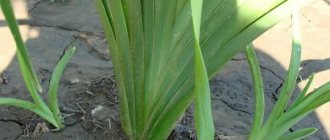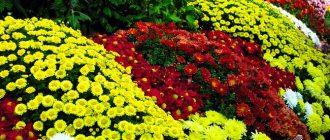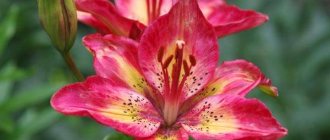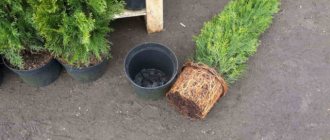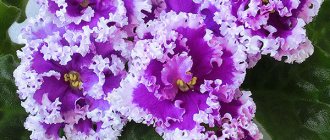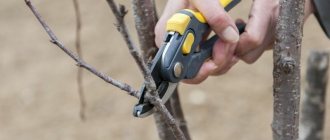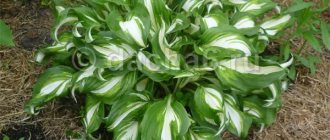Pros and cons of autumn planting
Are we talking about planting trees? The namesake of the famous gardener Andrey Tumanov, an entrepreneur, from the village of Drachenino, Promyshlennovsky district, Kemerovo region, confidently declares: “I am a supporter of early planting of apple trees. Trees should be planted in August. From the leaves there is an outflow of nutrients to the roots; by September 10, the apple tree gives roots, overwinters without problems and immediately begins to grow in the spring. If we plant late, the apple tree produces little root growth in the fall, and it spends energy on restoration.”
Alexei Savelyevich Yurkov has a different point of view (during the Second World War, a prisoner of 2 concentration camps, after the war he studied to be an agronomist, was the director of the state farm Kemerovo Fruit Nursery, and worked as a teacher at the Kemerovo Agricultural Institute until his 85th birthday): “Science suggests planting fruit trees in the fall, when the seedlings are already fully matured and ready for the dormant period. If planted in the fall, then in the spring the plant will enter the growing season early. It is not recommended to plant during the summer, since in the summer the plant devotes energy to increasing the vegetative mass, and so it will have to spend energy on survival.”
Nowadays, thanks to the advent of containers where seedlings are planted, the question has become simpler. Such seedlings can be planted at any time from spring to late autumn.
Timing of summer transplantation
When you can replant a plant in the summer depends on what stage of the growing season it is at.
Transplantation is allowed before flowering and after fruiting is completed. In the first ten days of June, cherries bloom mainly in Siberia and the Urals, so in these regions the tree can be replanted in the summer before flowering.
In other areas, the crop blooms in late April and May.
After fruiting, the cherries are replanted - at the end of July and in August in any region.
Important! Replanting cherries is not allowed during the period of flowering, formation and ripening of fruits.
Favorable days according to the lunar calendar
The lunar calendar advises replanting fruit trees on certain days. Such days in 2021 are August 1 and 2, 11 and 12, August 22-30.
The calendar also provides for unfavorable numbers. In August 2021 it is the 3rd and 19th.
When is the best time to replant trees?
According to the agronomist of the village of Vishnevka, Belovsky district, Alexander Nikolaevich Danilov, the best time for planting fruit trees and shrubs is autumn. “Spring is often unsuccessful. In addition, there is no time in the spring: sowing time. There should be six meters between trees. If trees are planted closer, then you need to plant one of the trees. They won’t grow together,” he says.
For planting, it is important to find a sunny place where a lot of snow accumulates in winter, which quickly melts in the spring. The planting hole for the apple tree must be spacious, at least 60x60x60 in volume. Don’t forget about dressing - humus, but not manure, and non-nitrogen fertilizers.
Oops! And here’s the catch. This assertion is completely rejected by Valery Ivanovich Umetsky, a gardener in the village of Uspenka, Krasnoyarsk Territory: “What trees survive in a Siberian garden? Short. What do they recommend? Dig a huge hole, put in a lot of fertilizer, make the tree grow. But we don't need growth. Only small plantings, our rootstock, our wildflower. The Siberian tree bears fruit even on a rock. What is the lifespan of a tree? In the south it is an eternal tree, and in Siberia it is 15-18 years old. And everything needs to be changed; winter damage accumulates.”
And I was convinced from my own experience that Valery Ivanovich is right, I myself have been planting trees “with a shovel” for a long time, digging a hole to accommodate the roots, no fertilizers! And I plant it, tied it with a figure eight to a stake, water it, and that’s it.
Transplanting gloxinia after hibernation: when and how to do it
Hello, dear readers! Surely you have plants at home that completely wither in the fall, but after a while they awaken and bloom with renewed vigor. One of them is Gloxinia, or Sinningia.
A characteristic feature of gloxinia is that this flower regularly freezes with the end of summer. The rest period can last from three to four months. As soon as the plant “wakes up”, it needs to be transplanted into new soil. Transplanting gloxinia after hibernation is done to ensure that the flower receives all the necessary nutrients.
If this is done too late, the synningia will quickly wither and die. Timely replanting into new soil promotes vigorous growth and abundant flowering. The first signs of awakening will appear in February.
But if spring has come, and gloxinia shows no signs of life, then this is the time when it can already be pulled out of hibernation. Water the plant a little and cover with a plastic bag. By the way, the flower must be watered during hibernation - but very, very moderately and infrequently.
March is the time when you can wake up the plant.
Replanting a flower
How to transplant gloxinia after hibernation so as not to damage it, so that after transplantation it does not have to get used to new conditions for a long time? It is best to buy ready-made soil.
This flower loves light, loose soil, which contains peat, sand and leaf soil. However, gardeners can easily prepare such a mixture themselves.
The amount of soil and fertilizer depends on the size of the plant; the larger it is, the more spacious the pot with soil should be.
When to plant Sinningia?
If you add a little humus to the pot, the too loose soil will become thicker. In addition, the awakened plant will receive additional beneficial substances. In this case, oversaturation of the soil with fertilizers can lead to death.
Stores always sell ready-made soil intended for specific types of plants. Find one for synching too. But concentrated fertilizers can be added to the soil no earlier than a week after transplanting.
Growth conditions
Gloxinia loves comfortable conditions. This also applies to the size of the pot. It should be wide enough, but not high. In general, the flower grows slowly, so it will look ridiculous in a high pot.
Before replanting, be sure to place drainage at the bottom of the pot. To do this, if you don’t have a bag of expanded clay, use small pebbles, foam chips, broken red brick and even coarse sand.
Before transplanting, when you remove the tuber, carefully inspect the root system. Often during hibernation it is affected by parasites. Unfortunately, these organisms are very unpretentious.
Most often, pests settle on a growing flower under its leaves, but they often live on tubers.
You also need to keep in mind that not all tubers wake up at the same time. In some specimens, the dormant period lasts five months or more.
This is a case when it is impossible to bring “potatoes” out of hibernation, as they will simply die. After transplanting into a new pot, the plant seems to freeze. At this time, it almost does not consume moisture from the soil.
Do not water the flower until the top layer of soil is dry.
Things to consider
To preserve the life of last year’s tubers, it is best to wait for the natural awakening of the plant. This usually occurs in early spring. At the same time, there is a method for forcing him to awaken.
How to wake up a plant:
- Place well-washed and dried mini-tubers in tight bags with a small amount of wet peat.
- Close the bags tightly and do not ventilate until you remove the tubers.
- Place all packages in a place open to sunlight or under the rays of a phyto-lamp. The bags should be exposed to light for 12-14 hours.
- The best temperature for waking up quickly is 24°–26° Celsius.
Observe: when perspiration appears on the film, you need to remove the tubers from the bag. Moisture condensation means that the tubers have begun their life activity. It is at this time that young buds appear on them, which means that the tubers can be planted in the ground.
Have a spring mood and a riot of colors on the windowsill!
Preparing the site
When planning a garden, you need to clearly understand what trees and shrubs you can grow. Tree compatibility plays a very important role, and it is also important to ensure that pollinators grow as close to each other as possible. The depth of groundwater, prevailing winds, and the possibility of stagnation of cold air are determined. If it is a slope, then where it is directed, conditions are more severe on the northern slope. The garden should be turfed so that tree roots can better withstand winter.
Alexander Danilov, an agronomist in the village of Vishnevka, Belovsky district, advises:
—If you plant a fruit tree in the wrong place, you may not grow anything for the rest of your life. In each area you can find places where there will be a special microclimate favorable for the tree.
The ideal place for an apple tree is a shelter (house, barn) from the prevailing winds. Unfavorable - lowlands, when returning spring frosts and colds descend into the lowlands. There is winter, there is spring freezing. If the garden is in a lowland, then the solution is to graft onto a skeleton-forming plant, onto wild game at a meter height. The temperature difference at the surface of the earth and above is very noticeable, and you avoid freezing.
Earth and substrates
When replanting, you should replace as much soil as possible, but so as not to damage the roots. It is better to buy a universal substrate that is ideal for most plants. Of course, some of them require special composition. Cacti prefer soil with a lot of gravel; azaleas and orchids grow in a mixture of bark, soil, and coconut fiber. Before filling the pot with soil, it is advisable to fill the lower thick layer of several centimeters with gravel or expanded clay.
Thus, we provide better drainage, which will save the plant from excess water, and the roots will not rot. The soil should be poured at a level of 1-2 cm below the edge of the pot. Expanded clay can be poured onto the surface to prevent lime deposits from forming there.
Most indoor flowers grow well in any soil. Some, however, require special formulations.
Which soil to choose depends on the type of plant:
- peat is loved by such green pets as anthurium, dracaena, and fern;
- heavy clay is suitable for Kalanchoe, papyrus, tradescantia;
- Gardenias and heathers do not tolerate the presence of calcium carbonate in the soil; they need slightly acidic soil.
Sometimes soil from the garden is used for replanting, but there is a high risk that it will bring weeds or pests into the house. In addition, it is too heavy for delicate roots. The prepared substrates are pre-disinfected and specially prepared from a mixture of various components, so that the roots can grow freely in them.
The new pot should not be too tall or large. Do not replant flowers into a much larger pot; the next container should have a diameter 2-3 centimeters larger.
Choose good pots with holes. The most ordinary plastic pot with holes is better than a decorative casing without holes.
How to replant a mature tree
Transplanting a mature tree is a disastrous option if it is not planned in advance. An adult tree has the same volume and size of the root system as its crown. Imagine! Is it possible to dig up such a plant without damaging it and replant it in another place? Nowadays, nurseries sell large plants that are planted in huge containers, and with the help of special equipment (mechanisms) they are removed from the ground, transferred to the site and transported to the planting site. The price of such a plant is several times higher than that of a seedling.”
Gardener from Kemerovo Ninel Kirillovna Solomakina advises:
— Plum branches can be up to three meters long. The apple tree grows in the same way. But if there are only eighty or two meters between the trees, this is wrong. When planting trees, consider this point.
When planting plums, the choice of location is very important; no more than 40 centimeters of snow should fall in winter. In any case, you need to use a technique such as compacting or shoveling snow from the bushes; the soil will freeze under the plants, the plum will not dry out, and will be more stable. There is no need to feed and water the plum tree in the second half of summer, then it is better prepared for winter. Water in the summer! You can use such a technique as planting plums in boxes, on earthen mounds or shafts. The wind blows the snow away and the soil freezes. Plum lives.
Choosing a time
Transplantation in autumn
Autumn replanting has the right to exist, provided that it is carried out at least a month before the first serious frost. In central Russia, this period begins on September 10 and ends on October 15–20. To replant the plant, you must wait until the dormant period begins - it begins after the leaves have completely fallen off. This will make it easier for the tree to withstand the procedure.
However, if autumn is dry, it is better to postpone the event to early spring.
Autumn planting gives the tree an advantage in terms of adaptation to climatic conditions
The main advantage of planting apricots in autumn is the gradual hardening that occurs with the first frost . As a result, by spring we will receive an apricot tree that is hardened and accustomed to local weather realities. At the same time, a timely planted plant has time to take root and strengthen over the winter, and in the spring it will begin to actively develop and grow.
Opponents of autumn transplantation argue that the wrong time in the fall can negatively affect the condition of the seedling . For example, it is undesirable to replant apricots during periods of strong warming, or too early, when there is too much time left before frost. The seedling can be damaged by cold weather, since in the first case there was a sharp temperature change, and in the second case it had time to get used to the warm regime and reacted poorly to the temperature drop.
Transplantation in spring
In spring, transplantation should be carried out before the buds swell, while the tree is still dormant. The main advantage of spring transplantation is the possibility of better survival of apricots due to warm temperatures. This can be argued, given the frequent return frosts. However, the truly positive aspect is the complete moisture of the soil that occurs after the snow melts. This condition will create more comfortable conditions for the seedling in a new location.
Spring replanting makes it possible to saturate the plant well with moisture and better take root in warm conditions.
But do not forget that an apricot transplanted in the spring will need periodic watering and will spend a significant part of the season on rooting and establishment. In addition, the plant will grow and develop in warm conditions, and with the onset of winter cold it may be at risk, being unprepared for such a change in weather.
Pros and cons
There are a variety of opinions regarding the time to transplant apricots. Some argue that autumn is preferable for tree survival, while others consider early spring to be a more reliable time. Judging from the point of view of adaptation to weather conditions, the autumn transplant looks preferable. Firstly, the apricot has time to undergo hardening before the onset of winter, and secondly, active development begins in the spring. The root system, which has taken root during the autumn-spring period, begins to fully provide all parts of the tree with the necessary nutrients. But it is worth remembering that all this happens only when the plant is planted in a timely manner, that is, when the period between transplantation and frost is not prolonged.
When planted in the fall, apricot grows faster and yields earlier
Mature fruit trees can be replanted even in winter, but provided that the air temperature is not lower than 5 degrees.
Transplanting seedlings in autumn
It is better to plant all berry bushes in the fall, like rowan. In the spring, they quickly begin to grow, before the soil dries out and stops sticking to the shovel.
In order for sea buckthorn to bear fruit well, it is planted not in a hole, but almost on the surface, deepening the root collar by ten centimeters. Additional roots form on the buried stem; in loose soil they are well ventilated, and the plant grows quickly and produces high yields. Sea buckthorn does not like digging up the soil; the root nodules may be damaged, the plant will become sick, or unwanted growth will occur. The best thing is to mulch the tree trunk circles.
Raspberries really need the sun, so we choose an appropriate planting site. We plant raspberry seedlings of the same variety at a distance of 60-80 cm from each other, in autumn or spring. I prefer autumn planting; it allows the bush to take root well and produce its first harvest next summer. We cut off the top, leaving 60-80 cm on the seedling, which will allow it to take root more easily. After planting, water thoroughly.
Fortunately, now in Siberia there is a choice of seedlings and fruit and berry crops. We visited Barnaul for the first time in the fall. On the experimental fields of the M.A. Lisavenko Institute, many things amazed me, but most of all the gardens. Apples, pears, plums, of unprecedented size, amazingly tasty, not just edible, but delicious! And very beautiful trees - in fruits... A low bow to the breeders, to everyone who developed, for years patiently created new varieties of fruit and stone fruits and achieved such amazing success. Our gratitude to you from all gardeners!
Lyudmila Filatkina
Features of autumn replanting of indoor plants
Only when the volume of the pot has outgrown and the plants are purchased in inert soil in the fall, transshipment is permissible, but even then it is not quite classical: the roots that have formed dense rings at the bottom of the container, like an overly compacted waterproof lump, will have to at least be stirred up.
When the soil is depleted, it makes no sense to leave the spoiled substrate, and when it becomes salty, sour, or infected, completely freeing the roots from the old soil with inspection, pruning and treatment of the roots is a mandatory measure.
Before you begin the transplant, you should make sure that you are well prepared for this procedure:
- prepare the containers into which the plants are transplanted in the fall: they should be ideally suited in volume. Even if the old pot is very noticeably outgrown, its volume cannot be greatly increased, adhering to standard recommendations for the ratio of height and width;
- make sure there are high-quality drainage holes and disinfect the drainage materials at the bottom;
- check the requirements of a particular plant species;
- select the substrate and its composition individually, carry out the treatment (it is better to disinfect any soil in the fall, especially if an infected plant is being transplanted into it);
- prepare tools, containers and all preparations that will be needed for processing plants;
- prepare two work stations - one for removing old soil, the other for planting in a clean substrate.
If autumn replanting is carried out due to soil contamination, it is carefully removed or washed off in warm, clean water.
The basic rules for the autumn replanting procedure are very simple:
- In all cases, except for soil acidification, the plant is well watered several hours or a day before transplanting.
- The plant is carefully removed by turning over or tilting the container and holding it by the above-ground parts as carefully as possible.
- The soil is carefully removed or washed off in warm, clean water, trying to minimize contact with the roots. If the root ball is very dense, the roots will need to be untangled. Solid masses filled with small roots, from which it is impossible to remove the substrate, are cut in several places.
- After release, the roots are carefully examined. All areas of damage, “doubtful” areas, dry, damaged roots are cut off.
- Cuts on the roots are immediately treated with charcoal. If we are talking about infection of a plant, the cleaned rhizome is first soaked in clean water to remove small particles of soil, and then in a solution of a fungicide selected according to the disease or pest.
- Drainage is poured into the new container, the height of which must correspond to the requirements of the specific plant type and a thin layer of soil on top.
- The plant is placed in the center, the roots are carefully straightened, soil is added evenly and slowly, filling the voids and trying not to bend the roots.
- The substrate is carefully compacted, squeezing the plant, but avoiding strong compaction. For species with fragile roots, you can simply add more substrate later as it shrinks after watering. The depth level is checked, leaving it the same and in no case burying the plant deeper.
After autumn transplantation, the plant needs an adaptation period. It is exposed in mild conditions, protected from any temperature changes, heat, cold, drafts, and direct sun. Watering is carried out very carefully for another 2–3 weeks, focusing on the condition and minimal preferences of the plant for soil moisture.
If the plant suffered from damp soil and for all succulents after transplantation, watering is not carried out, postponing it for 2-3 days.
https://stroy-podskazka.ru/komnatnye-cvety/peresazhivat-osenyu/
https://myusli.ru/dom/peresazhivat-cvety-osenyu
Replanting indoor flowers
Any plant gradually grows, and its root system also develops. It becomes larger over time, absorbing all the useful substances from the soil mixture. As the roots grow, they become cramped in the same container. Even if the “pets” are fed and kept in the same pot for several years, their full development will be suspended.
You can often observe when a flower is watered frequently, but the soil in it dries out very quickly. This happens due to the intensive growth of the root system. Another factor is that through the drainage hole you can see some of the roots that are making their way out. If this happens, then it’s time to change the cramped pot to a more spacious one.
Certain types of exotic plants do not require annual replanting. Changing the potty has a negative effect on them and they experience stress. They need to be replanted only when the root system has completely entwined the entire pot.
Transplantation helps solve various problems, since they often interfere with full development:
- not enough free space in the pot;
- if pests or diseases appear;
- lack of nutrients in the soil.
Plants need time to become well established before flowering, so dormancy is the best time.
Let's look at the lunar calendar
It has been proven that the location of the Moon affects the speed of fluid flow in living organisms. Flowers are no exception. Depending on the lunar phase, the restoration of the transplanted plant can be made more difficult or easier.
What impact does it have?
Depending on the lunar phase, the sap flow of all plants changes. To carry out any manipulations with flowers, gardeners are guided by the following rules of the four phases of the moon:
- The waxing moon is the period between the new moon and the full moon, causing ascending sap flow. At this time, the liquid moves from the roots to the above-ground part. The stem, leaves, buds and flowers are filled with energy and grow.
- A full moon is a period consisting of the full moon itself plus one day before and after it. The terrestrial part is richest in the energy accumulated during the waxing moon. Damage to the roots will have virtually no effect on the condition of the flower, since all the juices are in its upper part.
- The waning moon is the time from the full moon to the new moon. The juices rapidly move down to the roots, gradually weakening its above-ground part. During this period, it is undesirable to damage the root system.
The new moon is the period when all the energy of the plant has accumulated in the roots. The ground part is weakened. Damage to the root system can seriously harm the entire flower. The period consists of the new moon itself plus one day before and after it.
Is it possible to replant when the Moon is waning?
During this period, the bulk of the juices and energy accumulates in the roots. It is unlikely that you will be able to replant a flower without damaging the roots. This negatively affects the health and recovery of the plant after suffering stress. If possible, you should postpone the procedure until after the new moon.
When is a transplant necessary according to the lunar calendar?
- If the roots of the plants begin to ask out, growing through the holes at the bottom of the pot or do not fit into the flowerpot, then you need to take care of a new home for the plants.
- The soil in the pot is hard, powdered with a white, bad-smelling coating - this indicates increased pH acidity, which inhibits plant growth.
- There is a need, due to the biological parameters of the growth and development of the flower, to transplant it into new soil.
- A plant purchased at a flower shop most often has an artificial substrate, which must be replaced with soil recommended for this crop.
- The flower sheds yellow foliage, grows poorly, does not bloom, and looks sickly.
It is important to know:
- A large pot is more often the cause of poor plant health than a small one.
- Unless necessary, it is best not to replant plants during the colder months. Spring is the best time to transfer a green pet to a new pot.
- Despite the heat, there is no ban on replanting indoor plants in summer.


